The Language of Khmer Classical Dance in Cambodia
The Language of Khmer Classical Dance in Cambodia
by Michelle Vachon – Download PDF version (648k)
© 2008 The Cambodia Daily – This article appears with the permission of the copyright holder. No further reproduction is permitted.
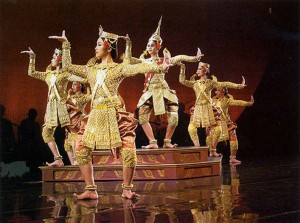
PHNOM PENH – Two recently published books on Cambodia’s classical dance reveal aspects of the art that have rarely been addressed in previous works.
They also very much complement each other and target different readerships.
With a total of 544 pages and more than 180 historical photos and illustrations, Paul Cravath’s “Earth in Flower” delves deep into the essence of Khmer dance beyond its resplendent costumes and mesmerizing gestures.
The book also contains little-known facts on the role of the Royal Palace’s dancers over the centuries, and how they became symbols of the King’s prestige. So powerful a symbol were they that the French attempted a royal troupe takeover in the 1930s as a way to reduce the power of the Khmer monarchy.
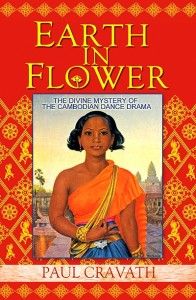
The story of “Earth in Flower” began in 1973, Cravath writes, when Cambodia’s Ministry of Culture contacted several international universities with a pressing need assistance to document classical dance. The country was under siege to communist rebels and ministry officials feared that dance traditions – in large part transmitted orally – would be a casualty of war.
Cravath, then a student at the University of Hawaii, took up the topic as his doctoral thesis. Delays followed due to the deteriorating situation in Cambodia, so that by the time he landed in Phnom Penh in January 1975, the Khmer Rouge were dosing in on the city.
Given access to dancers, teachers and the Royal Palace’s archives, Cravath started compiling data and conducting interviews while rockets regularly rained down on the city. He kept on working until the US military ordered his immediate evacuation on April 5, the one suitcase he was allowed to take with him stuffed with his notes and the rest of his belongings left behind.
Twelve days later on April 17th, Phnom Penh fell and the Pol Pot regime began.
The thesis he submitted for his degree in Asian theater in November 1984 – featuring references in eight languages – was the result of nine additional years of research and interviews with refugee dancers.
Given its origins, it is not surprising that some portions of the book are of more interest to scholars and dance researchers, but others, including the historical overview, are bound to appeal to lay people and experts alike.
Cravath writes that in pre-Angkorian and Angkorian times, female and male dancers were assigned to temples for religious rituals. Although slaves, the fact that dancers are mentioned by name in a stone inscription dated 611 would indicate that they had a higher status than other slaves.
King Jayavarman VII put more than 3,200 dancers in temples, according to inscriptions around the end of the 12th century There also were dancers for entertainment in the households of kings and dignitaries. And dancers constituted the king’s harem.
The most beautiful girls would be brought as young as six years old to the palace by their parents who were compensated according to the beauty of their child. From the time of King Ang Duong in the mid-1850s until the 1920s, dancers were cloistered in the palace – King Norodom, who had around 500 dancers at the start of his reign in the 1860s, allowed them one day per year to visit their families under escort.
Dancers were so much a symbol of prestige in the 19th century that Thailand’s King Rama III refused to accede to the request of Laotian King Chao Anou for dancers so that he would not “presume to be his equal,” Cravath reports. This would later prompt King Norodom to welcome a dance troupe headed by a high-ranking Thai lady who had fled the Bangkok court.
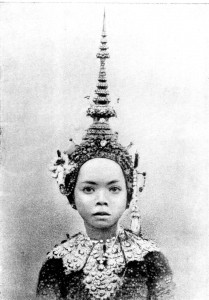
After the signing of the 1863 Protectorate Treaty, the French, who among many other things controlled the country’s finances, tried to reduce the number of palace dancers in order to lessen the King’s prestige. In the 1930s, the French would go as far as subsidizing the private troupe of Princess Wongat Say Sangvann, which performed for tourists, calling it the “one and only true” troupe. But after King Norodom Sihanouk acceded to the throne in 1941, his mother Queen Sisowath Kossamak found ways to reestablish the royal troupe’s ascendancy.
In support of her son, Queen Kossamak transformed performances so that the royal troupe could best serve Cambodia’s image nationally and abroad, Cravath writes. She shortened dance programs, had pure dance pieces followed by dramatic or comic works, and added musical interludes.
The presence of Princess Norodom Buppha Devi, “a most skillful and beautiful dancer,” Cravath writes, helped make the royal troupe a powerful political tool.
During the Khmer Rouge regime, most artists who had remained in the country disappeared A former Royal University of Fine Arts teacher who survived, Chheng Phon, would become in the early 1980s “the strongest force in the struggle to preserve any of the per¬forming arts of Cambodia,” Cravath writes.
One of Cravath’s goals was to research the role dance played in Khmer society: “Cambodian dance has always been a representation of two natural forces or principles – the Feminine and the Masculine – in confrontation, and dance was a means of contacting the spirits who could influence the outcome of their interaction,” he writes.
Dance could be seen as an odd subject to be tackled by Cravath, as the actor, theater director and drama professor at the University of Hawaii has walked all his life with braces on his legs due to a childhood illness, according to his publisher Kent Davis of DatASIA.
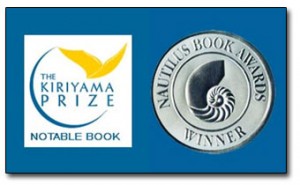
Since being released in book form a few months ago, “Earth in Flower” has received two international awards – the Kiriyama Prize Notable Book and the Nautilus Silver Award – and was selected by the Independent Book Publishers Association to appear on the cover of Publisher’s Weekly’ in February 2008, Davis said.
Rather than focusing on the distant origins of Khmer traditional dance or an in-depth academic discourse of the form, Denise Heywood’s book “Cambodian Dance, Celebration of the Gods” is one of the few recent books detailing dance in Cambodia today.
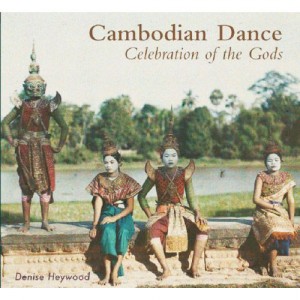
A British journalist and Asian art lecturer, Heywood has crafted a 144-page work in a coffee-table format that contains superb historical information as well as illustrations and photos.
These illuminating images include French posters for King Sisowath’s dancers 1906 performances in Paris, paintings of dancers published in Pierre Loti’s 1912 book “Un Pelerin d’Angkor,” or Angkor’s Pilgrim, and photos of a masked lakhaon kaol dancers performing ‘Weyreap” in Phnom Penh in 2004.
In her book, released by River Books in Bangkok, Heywood briefly covers all aspects of dance, supplying the type of basic facts certain to attract all readers, regardless of their familiarity with Cambodian dance.
In the chapter “Preparation for Performance,” she explains that costumes must fit so tight on dancers’ bodies that they have to be sewn on them before each performance. Women’s makeup used to consist of lead and rice or alabaster powder, which gave their faces an otherworldly whiteness, but this has now been replaced by regular cosmetics. Masks for male lakhaon kaol dancers are made of clay or papier-mache, and may take a month to sculpt and paint.
Heywood also summarizes storylines of the most commonly staged dances, such as the epic tale Reamker, the Apsara Dance and the Story of Mekhala. In the gestures section, she shows with illustrations that hand movements usually signify parts of flowers, the hand pointing up indicating a leaf and the index finger held up the stem.
Of interest in the historical portion of the book is Heywood’s section on Western dancers such as Belgian dancer Xenia Zarina, who came to Cambodia in the 1920s and 1930s to study Khmer classical dance in order to perform works in that tradition in the West.
Later in the book, she mentions that Pol Pot whose regime would cause the death of about 90 percent of the country’s artists, had a sister in the royal troupe and a cousin who had been a star dancer and a favorite of King Sisowath.
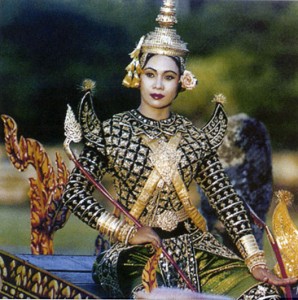
Writing about dance today, Heywood puts a name on the faces of people who receive little recognition in the field, some of the leading advocates and masters responsible for classical dance’s high standards and vibrant works at the present time.
Heading the list are Chheng Phon and legendary Pich Turn Kravel, a well known actor in the 1960s who survived the Khmer Rouge regime to write and choreograph dramas in the 1980s and 1990s. Now respectively in their 70s and late 60s, the two men regularly serve as advisers on dance and theater productions in the country.
At the end of the book, Heywood describes the Cambodian government’s lack of support for the arts. Not only do artists no longer have an appropriate national theater to perform, but also the Royal University of Fine Arts has been relocated at a site on which, she writes, “buildings are already cracking…a remote, barren area of landfill where they are sometimes mugged en route to classes.” The start of RUFA classes was delayed in October 2008 due to the campus being inundated for weeks by knee-deep flood water.
In April 1995, Heywood had interviewed the future King Norodom Sihamoni who told her that while Cambodia “must keep the strict classical traditions intact” new works and forms must be developed.
‘Too much emphasis is placed on Angkor,” Heywood reports Norodom Sihamoni telling her. “Glorious as it is, it’s the past. It is the witness of a great culture, we must safeguard it. But now Cambodia needs other expressions.”
